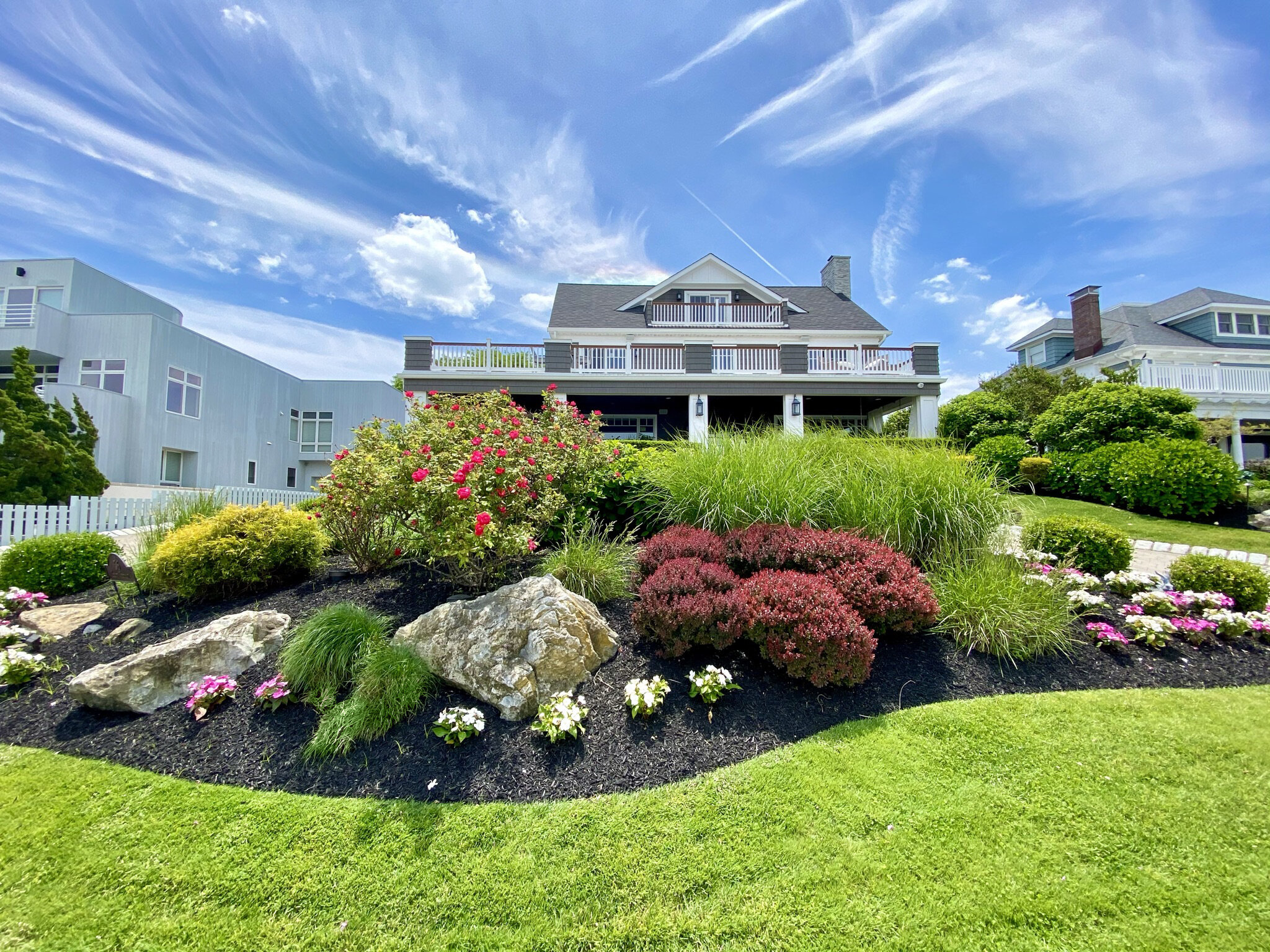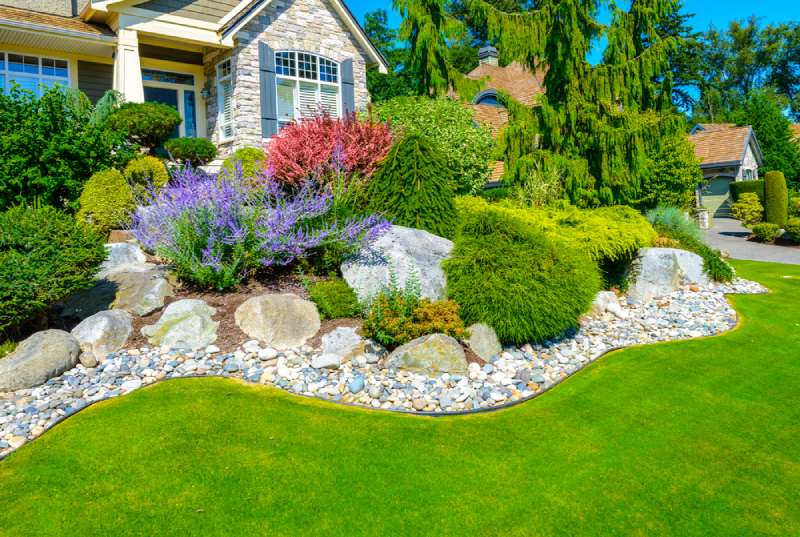Why Selecting the Right Palm Desert Landscaping Solution Matters
A Comprehensive Guide to Creating and Implementing Effective Landscaping Solutions
The art and science of landscaping expand past simple visual appeals; they involve a thoughtful integration of layout concepts, environmental stewardship, and practical execution. A detailed guide to reliable landscape design services starts with an extensive understanding of your outdoor room, highlighting the importance of unity, balance, and proportion. As we discover lasting strategies and the option of appropriate vegetation, the effects for biodiversity and community health end up being increasingly evident. What methods can one utilize to make sure these landscapes not only prosper however also grow attuned to their environments?

Recognizing Landscape Layout Principles
One may wonder what fundamental components add to efficient landscape design. At its core, effective landscape layout rests on a number of essential principles that assist the setup and option of components within a room. These principles consist of unity, equilibrium, percentage, and rhythm, each offering to create an unified outdoor setting.
Unity refers to the natural partnership amongst various parts, making sure that they collaborate aesthetically and functionally. Balance can be achieved through asymmetrical or in proportion arrangements, enabling the landscape to really feel stable and inviting. Proportion includes recognizing the scale of elements in regard to each other and the surrounding atmosphere, advertising aesthetic consistency and comfort.

Assessing Your Outdoor Area
Prior to applying the principles of landscape style, a comprehensive analysis of your exterior space is important. This preliminary analysis helps define the scope of your landscaping job and makes sure that your layout aligns with the distinct qualities of your residential or commercial property. Begin by assessing the dimensions of your area, taking specific measurements to comprehend the readily available area for various aspects such as patio areas, gardens, and pathways.
Following, observe the existing attributes of your landscape, consisting of topography, dirt high quality, and drain patterns. These variables considerably influence plant choice and positioning. In addition, assess the sunlight exposure throughout various locations throughout the day, as this will certainly influence the sorts of plants that flourish in your garden.
Think about the microclimates developed by structures, trees, and various other obstacles, as they can impact temperature level and wetness levels. Take note of any type of existing plants or hardscape aspects that you desire to maintain or remove. This extensive evaluation lays the foundation for a efficient and well-informed landscaping solution, ensuring that your layout is not only aesthetically pleasing but additionally functional and lasting for several years to find.
Sustainable Landscaping Techniques
These methods not just promote ecological balance yet additionally enhance the useful and aesthetic worth of a landscape. Executing reliable irrigation systems, such as drip watering, minimizes water waste and guarantees that plants get appropriate dampness (Palm Desert Landscaping).

An additional effective method is the calculated positioning of bushes and trees to give natural windbreaks and shade, therefore lowering power prices (Palm Desert Landscaping). Rain gardens can be integrated right into the landscape layout to manage stormwater runoff properly, filtering contaminants before they enter waterways
Picking the Right Plants
Choosing the right plants for your landscape is vital to attaining both visual allure and eco-friendly consistency. The Home Page process begins with an understanding of your local environment, dirt conditions, and the particular microenvironments within your landscape. Assessing factors such as sunshine direct exposure, moisture levels, and existing flora will help you choose plants that thrive in your unique setting.
Consider incorporating indigenous plants, as they are well-adapted to neighborhood problems, call for much less upkeep, and support regional wildlife. In addition, selecting a varied range of species can improve biodiversity while lowering the threat of disease and insect outbreaks. It is important to assess the growth behaviors, growing periods, and seasonal shades of potential plants to develop a dynamic and cohesive landscape.
Moreover, consider the planned use of the space; for circumstances, if the location will experience high foot website traffic, choose resilient ground covers. By thoughtfully selecting plants that align with both your visual goals and environmental requirements, you can develop a sustainable landscape that not just boosts your home however likewise contributes favorably to the surrounding environment.

Implementation and Upkeep Approaches
Once the ideal plants have been picked for your landscape, the focus shifts to reliable application and recurring upkeep techniques. Effective installment begins with proper website preparation, which includes soil screening to establish nutrient degrees and pH, followed by modifying the soil as required. Very carefully organize plants according to their development habits and light needs, ensuring adequate spacing to promote healthy growth.
Irrigation is an important component of execution. Develop a watering timetable that takes into consideration the specific requirements of each plant varieties, adjusting for seasonal modifications. Making use of drip irrigation systems can enhance water efficiency and decrease drainage.
Upkeep techniques have to be applied to make sure the durability and vigor of your landscape. Regular jobs include weeding, mulching, and pruning to manage development and prevent condition. Fertilizing should be performed based on soil examinations, offering the necessary nutrients without over-fertilizing.
Checking for insects and diseases browse around here is crucial; early discovery can prevent significant damages. Seasonal adjustments to maintenance routines, such as winterizing perennials and preparing for spring growth, will certainly make certain that your landscape continues to be visually enticing and healthy year-round.
Verdict
Finally, effective landscaping options require a thorough understanding of style concepts, precise assessment of outdoor areas, and the application find of lasting techniques. The choice of appropriate plant types plays an essential role in improving visual appeal and environmental strength - Palm Desert Landscaping. Successful application and ongoing maintenance further make certain the durability and vigor of landscapes. By incorporating these aspects, landscapes can be transformed into attractive, practical environments that advertise biodiversity and contribute favorably to neighborhood well-being.
One might wonder what foundational elements contribute to effective landscape design. At its core, successful landscape design hinges on several key concepts that guide the plan and option of elements within a space.Choosing the right plants for your landscape is crucial to achieving both visual charm and ecological consistency. It is necessary to assess the growth habits, growing durations, and seasonal colors of potential plants to produce a vibrant and natural landscape.
When the best plants have been chosen for your landscape, the emphasis changes to effective application and continuous upkeep strategies.